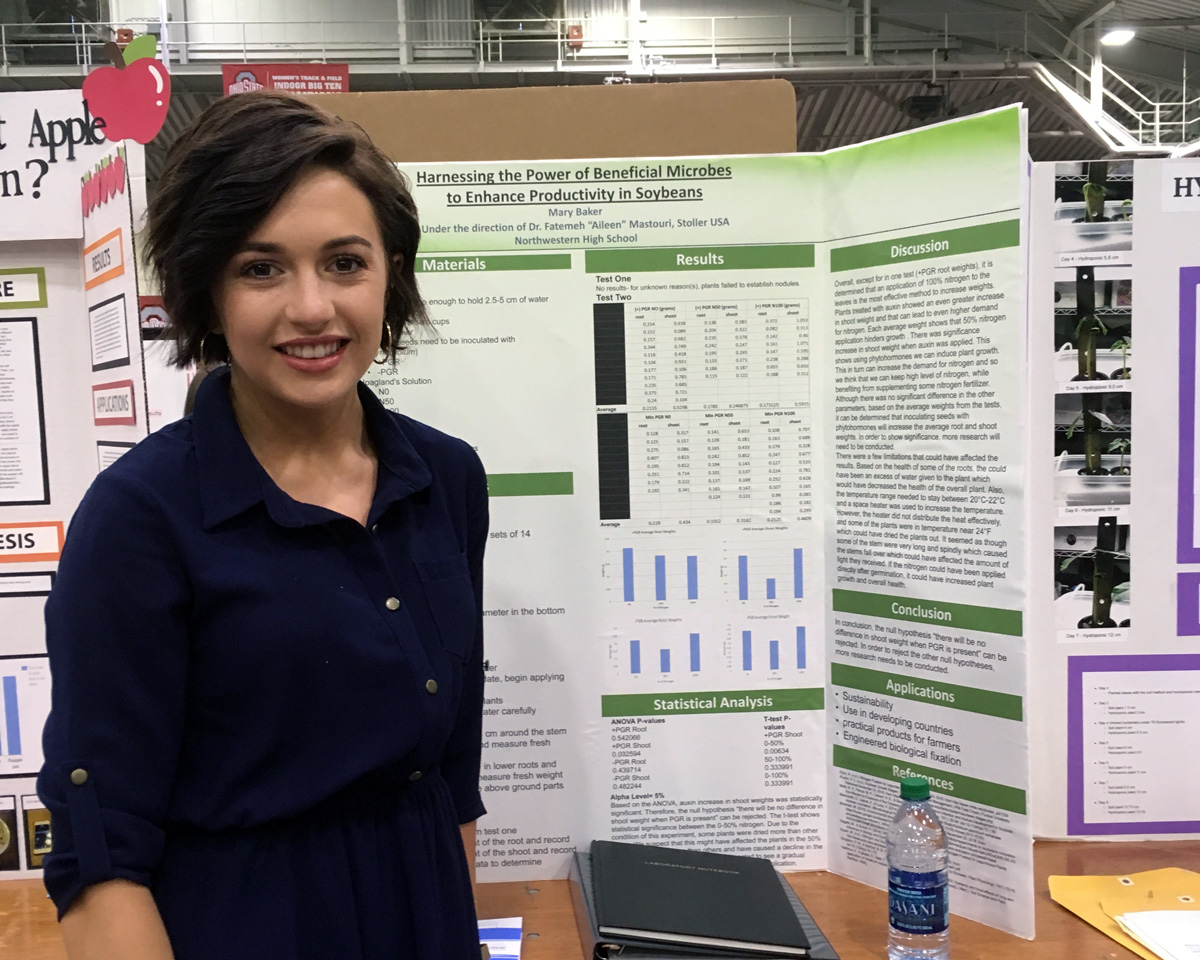Harnessing the power of beneficial microbes to enhance productivity in soybeans
Does application of a plant growth regulator increase plant growth and root nodulation?
Supervising teacher
Kelly Woodruff and Aileen Mastouri, Stoller USA
Student
Mary Baker
School
Northwestern High School
Supporting files
research-paper-marybaker.docx
The purpose of this research was to determine the effect of phytohormones and nitrogen on soybeans. Phytohormones regulate plant growth and nitrogen is necessary for plant growth and is often the nutrient limiting plant growth. Legumes are able to associate with Nitrogen-fixing bacteria known as Rhizobia and use the nitrogen fixed by this bacteria as their source of nitrogen. In exchange for nitrogen, plant provide energy in form of carbohydrates to these bacteria-costly to the plant. When legumes have access to readily available nitrogen, plant prefers to use this available nitrogen and so nodulation is reduced of legumes, but in this research we wanted to understand if application of auxin can reduce the negative impact of nitrogen fertilizer on nodulation. The rationale for this research question is that application of auxin can increase plant growth and increase demand for nitrogen. So, we hypothesize that auxin-treated plants, may maintain high level of nodulation even when there is some free nitrogen available.

Two sets of seeds were infected with Bradyrhizobium japanicum, but only one set was inoculated with Plant Growth Promoting Rhizobia (PGR). The seeds were plants in a controlled environment and after three weeks, the plants were sprayed with 0%, 50%, and 100% nitrogen, After 30-35 days, the plants were harvested. Unfortunately, none of plants developed any nodules in this experiment. But we found that, except for in one test (+PGR root weights), an application of 100% nitrogen to the leaves is the most effective method to increase weights. This supports the background research. Each average weight shows that 50% nitrogen application hinders growth. In conclusion, the null hypothesis “there will be no difference in shoot weight when PGR is present” can be rejected. In order to reject the other null hypotheses, more research needs to be conducted.